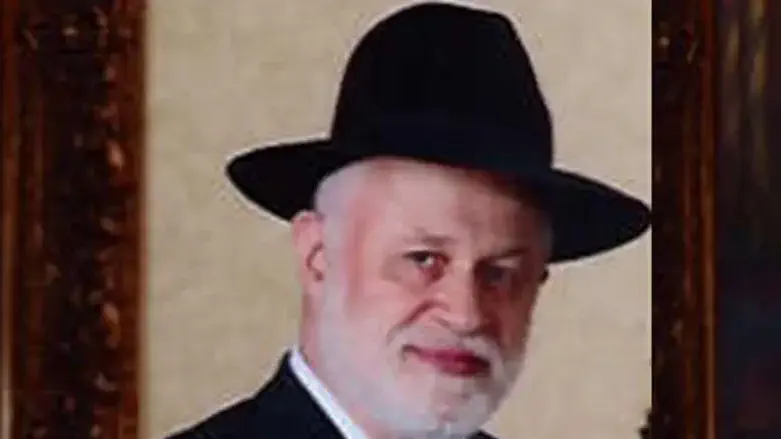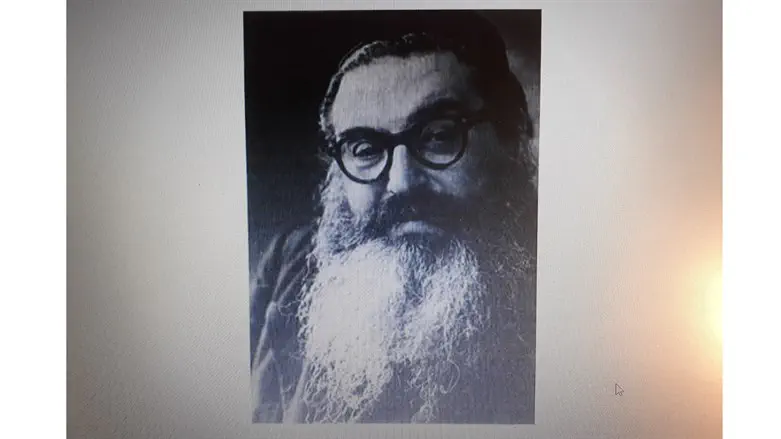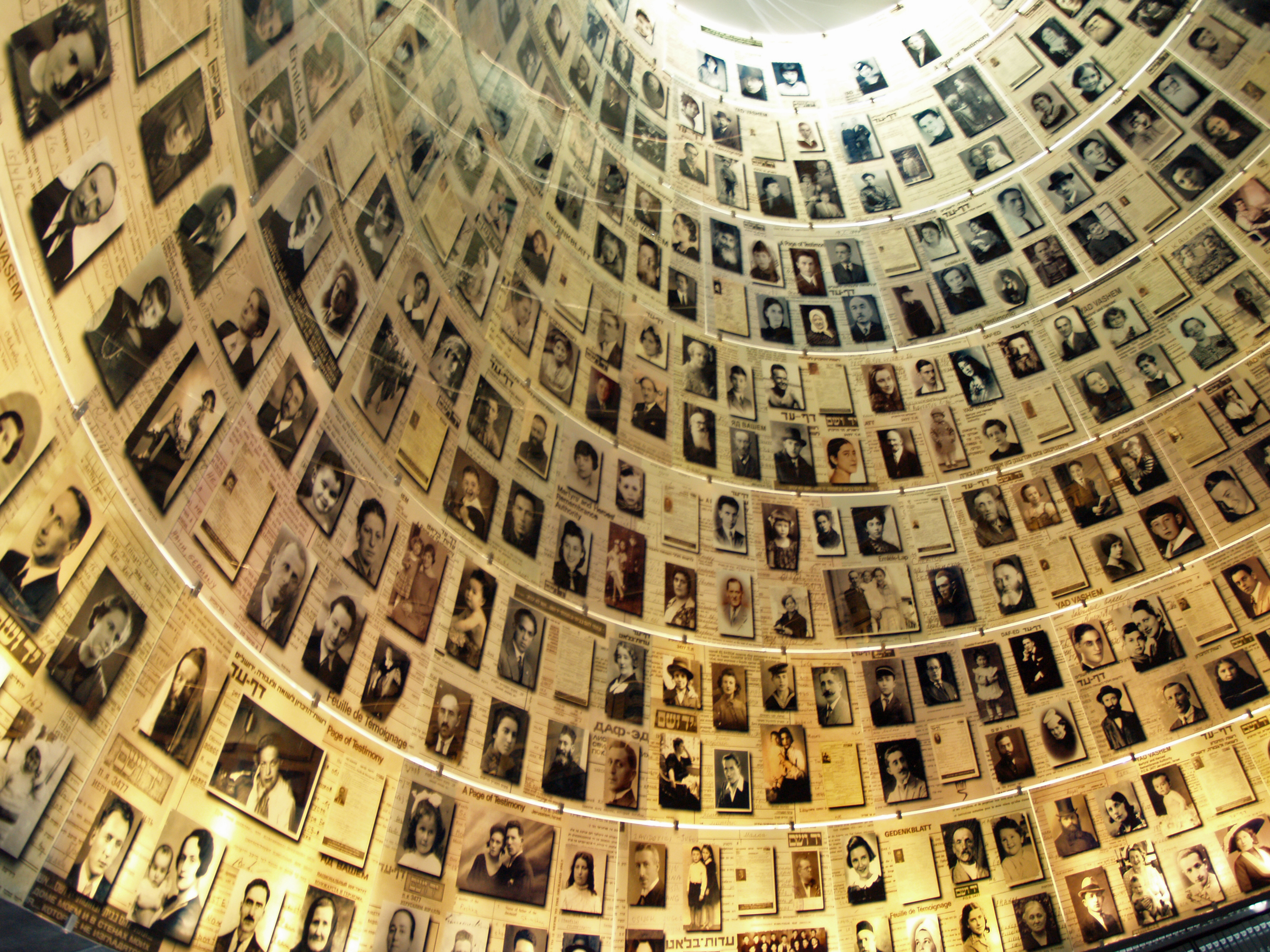
English translations of Rav Yitzchok Hutner's books and thought systems (Part Six). This lecture was translated during his lifetime. Read previous articles here:
Part one deals with the contributions of Rabbi Pinchas Stolper (1931–2022) in interpreting and translating the works of Rav Yitzchok Hutner (1906–1980) into English. Part two deals with the contributions of Rabbi Yitzchok Alster (b. 1935) in interpreting and quoting the works of Rav Hutner into English. Part three deals with the translation of some of Rav Hutner's works by Rabbi Eliakim Willner and of his biography into English by Rabbi Shmuel Kirzner. Part four deals with the reasons Rav Hutner's books were not translated into English during his lifetime and following his passing. Part five is a lecture on Jewish Education translated into English during Rav Hutner's lifetime.
"Holocaust" — A Study of the Term, and the Epoch it is Meant to Describe, from a discourse by Rabbi Yitzchok Hutner. A Rosh Yeshivah's Response
(Translated [from Yiddish into English] by [Rabbis] Chaim Feuerman and Yaakov Feitman published in The Jewish Observer magazine, Agudath Israel of America, October 1977, re-published in A Path Through the Ashes: Penetrating analysis and inspiring stories of the Holocaust from a Torah perspective. Collected from the pages of The Jewish Observer by Rabbi Nisson Wolpin, Editor. Published by ArtScroll Mesorah Publications in conjunction with Agudath Israel of America, January 1986)
The summary and translation below is from the original article in English:
1) The Questions: (1) Is the term "Shoah" (lit. "Holocaust") acceptable in describing the Churban — the destruction of European Jewry during World War II? (2) Should the "Holocaust" be taught separately as many schools are now doing or planning to do, or incorporated into the regular courses on Jewish History and taught as part of the studies on this particular time period? (3) If the latter, where indeed does the Holocaust "fit in" with the rest of Jewish History?
Yeshiva and Jewish Day School principals posed these questions to Rabbi Yitzchok Hutner [1906–1980] Rosh HaYeshiva of Mesivta Rabbi Chaim Berlin and member of the Moetzes Gedolei GaTorah (Council of Torah Sages) of Agudath Israel of America. In response he delivered a discourse to a gathering of [about] 100 Menahalim (Principals [of Jewish schools]) assembled at the yeshiva [in Brooklyn, USA]. In it, he focused on significant aspects of the Churban ("destruction/catastrophe" i.e. The Holocaust) that were hitherto either little known or studiously avoided.

2) Answer/The Response: Before we attempt to designate a name for the shattering events of 1939-1945, we must examine the significance of those events in their historical context. We shall refer to the term "Holocaust" only when we discuss the Nazi destruction of European Jewry during World War II. This in no way signifies the acceptability of this term. We shall not merely discuss history. Our orientation toward Jewish history must reflect an attitude toward Kedushah (holiness). This sanctity stems from the fact that "the Jewish people and the Torah are one" (Zohar Acharei Mos 73), thus intimately relating the proper study of Jewish history with the study of Torah.
3) The Origins of the Term: The term "Shoah" was coined by the [secular] founders of Yad Vashem [Holocaust museum/center] in Jerusalem, since they were convinced that the tragedy of European Jewry was so unique in its proportions and dimensions that no previous phrase could encompass its meaning. By singling out the quantitative differences of this particular Churban ("destruction/catastrophe' i.e. The Holocaust), those who sought a new terminology for these events missed the essence of their uniqueness. It is not just the proportions and dimensions of the Holocaust which define its quintessence, but its establishment of a new and significant pattern in Jewish history.

We shall uncover two new directions in recent Jewish history with reference to the gentile persecution of Jews. Recent history has shifted dramatically in two new areas.
THE FIRST NEW DIRECTION IN JEWISH HISTORY:
4) The Era of Disappointment: Jews have always been beaten by gentiles; only the means and instruments of torment have varied. The innovation of recent times has been that for long periods Jews were deluded into trust in the gentiles by a series of laws and regulations on their behalf, only to have that trust shattered by the rescission of those very laws. This historical period culminated in the Holocaust, the largest-scale annihilation of a people in history, yet resulting not from lawless hordes but flowing directly from legalized and formal governmental edicts. The end result of this period for the Jewish psyche was a significant – indeed, crucial – one. From trust in the gentile world, the Jewish nation was cruelly brought to a repudiation of that trust. In a relatively short historical period, disappointment in the non-Jewish world was deeply imprinted upon the Jewish soul.
5) Torah Source for the New Era: Let us study together the passage in the Torah where this monumental turn of events is [prophetically] reflected: "And God said to Moses;...this nation [Israel] shall arise and fall prey to the lure of strange nations and trust in them [according to the interpretation of Onkelos (c. 35–120 CE), meaning 'the temptation of the nations.']...And I [God] will hide my Face from them, and they will become as food (for their enemies), and great evils and troubles will come upon them, then shall they declare: 'It is because my God has not been in my midst that these evils have befallen me'." (Deuteronomy 31: 16-17).
The "great evils and troubles" which are the direct result of trusting and relying upon the gentile world signify the impetus for the next immediate stage in Jewish history, a unique point in the Teshuvah-repentance process.
6) The First Steps Toward Teshuvah ["return/repentance"]: What we encounter in the above passage, Deuteronomy 31:16-17, there seems to be Teshuvah ("return/repentance"): yet, no real admission of wrongdoing [by Israel] has been made. What we encounter in this passage, unique in the Torah, is a kind of Teshuvah/non-Teshuvah, a leaning toward Teshuvah, yet not quite reaching the point of Teshuvah Gemurah, the complete penitence required by the Torah and God. This is a stage of Teshuvah, a kind of Teshuvah-readiness that Knesses Yisrael [Gathering/People of Israel] will reach in future days before it achieves total repentance. This stage of Teshuvah will come about as a direct result of the "great evils and troubles" which – as we interpreted according to Onkelos – come upon them because of their trust in the [gentile] nations.
Thus there is revealed to us both the chronology and the impetus for the Teshuvah of Acharis HaYamim (the End of Days). This can only come about through promises rescinded, rights revoked, and anticipations aborted. The pain and anguish at the time of these shattered illusions is all too real and tragic; yet the events themselves serve to bring us to the recognition that "it is because my God has not been in my midst that these evils have befallen me." This the RAMBAN [Nachmanides, 1194–1270] sees as the necessary prerequisite to the final step of [complete] Teshuvah when "they will add to their earlier regret the complete confession and total penitence."
7) Children of the Violators: Our new understanding of the essence of our era allows us some comprehension of the phenomenon of our "Age of Baalei Teshuva" (non-Orthodox Jews who "return" to Orthodox Judaism). Teshuvah seems to "be in the air," and indeed the many [Orthodox Jewish] movements currently succeeding to an unprecedented degree in bringing [secular or non-Orthodox] Jews closer to [Orthodox] Judaism are but a reflection of the fact that the very climate is permeated with a kind of Teshuvah-readiness.
This climate is the result of the disappointment in the gentiles, which demolished the first stumbling-block to Teshuvah, and forced the recognition that "it is because my God has not been in my midst" (Deuteronomy 31:16-17) that the awesome events of recent times have occurred. There are characteristics and trends common to an entire epoch that eventually affect each individual in his own way.
So much for the first new direction in Jewish history in relation to gentile persecutions.
THE SECOND NEW DIRECTION IN JEWISH HISTORY:
8) Public Opinion versus Truth: Before we explore the second of the new directions in detail, it is important to establish a clear distinction between any common approach to world events and Daas Torah, a Torah view of the world. "Public opinion" is by definition colored by outside forces, subjective considerations and the falsehood of secular perspective. Sadly, even in our own circles, the model for shaping public opinion lies in the hands of the [secular powers in the] state of Israel.
To cover up the contributions of the secular leaders of pre-state Israel to the final catastrophic events [as vividly recounted in the 1961 book Perfidy by Ben Hecht] those in a position to influence public opinion circulated the notorious canard that Gedolei Yisrael [great Torah scholars] were responsible for the destruction of many communities because they did not urge emigration [to the British Mandate of Palestine]. The [secular leaders] of the state of Israel omitted any mention of their own contributions to the then-impending tragedy. What they omitted in their own version of history is the second of the above-mentioned new directions in recent Jewish history. It is that phenomenon which we must now examine.
9) East and West Meet: For centuries, indeed millennia, gentile persecution of Jews took one of two forms, but the two never worked simultaneously. Either Jewry had to contend with the Yishmael [Arab, Muslim] nations of the East or was persecuted and expelled by the [European, Christian] nations of the West. With World War II, this long epoch was brought to a crude and malevolent close. Haj Amin el-Husseini [1897–1974], the [Islamic] Grand Mufti of Jerusalem joined with [Nazi leader] Adolf Hitler [1889–1945] to found one of the most significant alliances of modern times. Soon after he landed in Berlin in November 1941, the Mufti demanded that all available resources be used to annihilate Jews. Two months later (January 20, 1942) at the Wannsee Conference, the formal decision was made [by the Nazis] to annihilate all Jews who had survived the ghettos, forced labor, starvation, and disease.
Of course, the Mufti was serving his own perverted fears, which were the influx of millions of Jews into [the British Mandate of] Palestine and the destruction of the Mufti's personal empire. Yet, there can be no doubt that through their symbiotic relationship, Hitler and the Mufti each helped the other accomplish his own evil goal.
10) The Mufti's First Step: The Mufti's trip to Berlin was the first ominous step in the joining of the anti-Jews of the East with those of the West to accomplish their diabolic design. From the purely secular historical standpoint, there is no connection between the two directions we have discussed. The Moslem world never granted privileges [to the Jews] that it later retracted, and thus never disappointed the Jews in its midst. What, then, joins the two trends which seem to have coincided so significantly in our generation? A passage from the Torah can give us the answer: "And Esau [according to Torah Judaism, he is the progenitor of the Europeans and Christianity of the West] went to Yishmael [according to Torah Judaism, he is the progenitor of the Arabs and Muslims of the East] and took Machlas the daughter of Yishmael, Abraham's son, the sister of Nevayos, in addition to his other wives, for a wife." (Genesis 28:9)
Since the actions of the Patriarchs are a sign of what would happen later to the children [Ma'aseh Avos Siman Lebanim] and every action in the Chumash [Torah] is eternally significant, we may learn from this passage that it was [prophetically] inevitable for the forces of Eisav [the West] and Yishmael [the East] to combine. We are now living in the midst of that pivotal moment in Jewish history.
11) Coming to Terms: We may now return to the original questions. "Is the term 'Shoah' acceptable?" The answer is CLEARLY NOT. The word "Shoah" in Hebrew, like "Holocaust" in English, implies an isolated catastrophe, unrelated to anything before or after it, such as an earthquake or tidal wave. As we have seen, this approach is far from the Torah view of Jewish history. The Churban ("destruction/catastrophe" i.e. The Holocaust) of European Jewry is an integral part of our history and we dare not isolate and deprive it of the monumental significance it has for us. In truth, the isolation of one part of Jewish history from another, the separation of one part of Torah from another, has caused much of the inability to deal with events such as Churban Europe (i.e. The Holocaust in Europe).
We have exposed the mistake of the [secular] founders of Yad Vashem who felt compelled to find a new term ("Shoah") for the destruction of European Jewry because of its proportions and dimensions. They did not realize that the significance of the Holocaust is precisely in its intricate relationship with what will come after [according to a Torah perspective].
The pattern of Jewish history throughout the ages is Churban, Golus, Geulah – Destruction, Exile, Redemption, and no event requires new categories or definition. The answers to questions (2) and (3) are therefore obvious and need no further elaboration.
12) Tochachah [Rebuke] versus Specific Guilt: The Churban ("destruction/catastrophe" i.e The Holocaust) of European Jewry was a Tochachah ("rebuke" [by God]) phenomenon [as explicitly stated by God in the Torah in the portions of Bechukosai (Leviticus 26:3–27:34) , Ki Savo (Deuteronomy 26:1–29:8), Nitzavim-Vayeilech (Deuteronomy 29:9–31)], an enactment and rebuke which Klal Yisrael ("People/Community of Israel") carries upon its shoulders as an integral part of being the Am Hanivchar, God's chosen ones, we have no right to interpret these events as any kind of specific punishment for specific sins.
The Tochachah is a built-in aspect of the character of Klal Yisrael until Mashiach [the true Jewish Messiah] comes and it is visited upon Klal Yisrael at the Creator's will and for reasons known and comprehensible only to Him [God Himself]. One would have to be a prophet or a Talmudic sage to claim knowledge of the specific reasons for what befell us [during The Holocaust]; anyone on a lesser plane claiming to do so tramples in vain upon the bodies of the Kedoshim ("[Jewish] martyrs') who died Al Kiddush Hashem [for the Sanctification of God's Name] and misuses the power to interpret and understand Jewish history.
Only through a rededication to sole use of the Torah as guide through the byways of history will we be sure to arrive at the truth we all seek.
Rabbi Yitschak Rudomin was born to Holocaust survivor parents in Israel, grew up in South Africa, and lives in Brooklyn, NY. He is an alumnus of Yeshiva Rabbi Chaim Berlin and of Teachers College–Columbia University. He heads the Jewish Professionals Institute dedicated to Jewish Adult Education and Outreach – Kiruv Rechokim. He was the Director of the Belzer Chasidim's Sinai Heritage Center of Manhattan 1988–1995, a Trustee of AJOP 1994–1997 and founder of American Friends of South African Jewish Education 1995–2015. He is also a docent and tour guide at The Museum of Jewish Heritage – A Living Memorial to the Holocaust in Downtown Manhattan, New York. He is the author of The Second World War and Jewish Education in America: The Fall and Rise of Orthodoxy. Contact Rabbi Yitschak Rudomin at izakrudomin@gmail.com
...